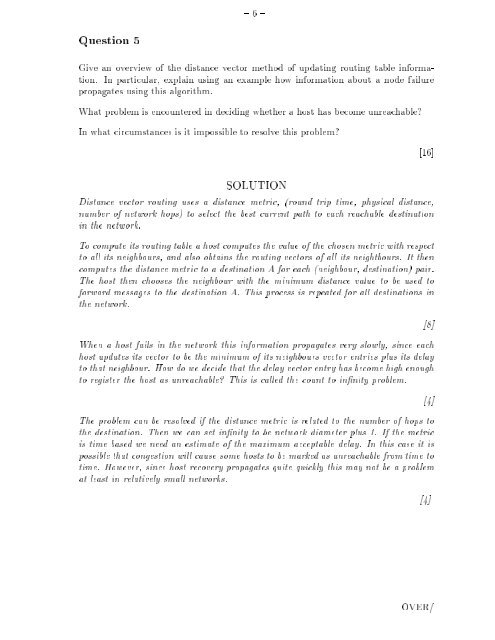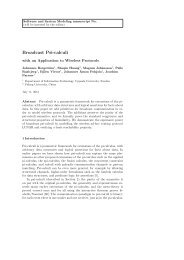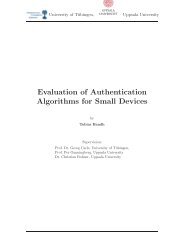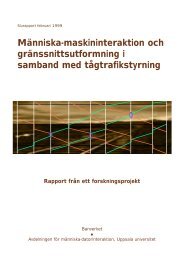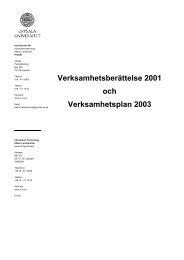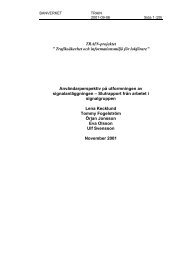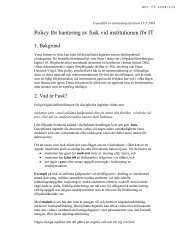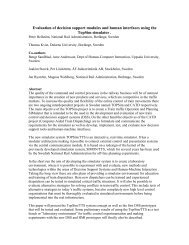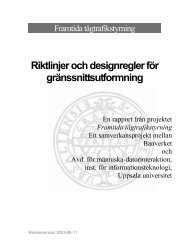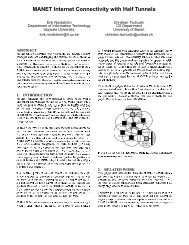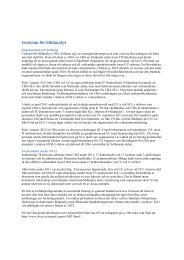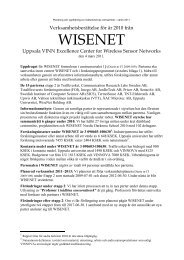Final Examination Data Communication and Networks ...
Final Examination Data Communication and Networks ...
Final Examination Data Communication and Networks ...
Create successful ePaper yourself
Turn your PDF publications into a flip-book with our unique Google optimized e-Paper software.
{6{<br />
Question 5<br />
Give anoverview of the distance vector method of updating routing table information.<br />
In particular, explain using an example how information about a node failure<br />
propagates using this algorithm.<br />
What problem is encountered in deciding whether a host has become unreachable?<br />
In what circumstances is it impossible to resolve this problem?<br />
[16]<br />
SOLUTION<br />
Distance vector routing uses a distance metric, (round trip time, physical distance,<br />
number of network hops) to select the best current path to each reachable destination<br />
in the network.<br />
To compute its routing table a host computes the value of the chosen metric with respect<br />
to all its neighbours, <strong>and</strong> also obtains the routing vectors of all its neightbours. It then<br />
computes the distance metric to a destination A for each (neighbour, destination) pair.<br />
The host then chooses the neighbour with the minimum distance value to be used to<br />
forward messages to the destination A. This process is repeated for all destinations in<br />
the network.<br />
When a host fails in the network this information propagates very slowly, since each<br />
host updates its vector to be the minimum of its neighbours vector entries plus its delay<br />
to that neighbour. How do we decide that the delay vector entry has become high enough<br />
to register the host as unreachable? This is called the count to innity problem.<br />
The problem can be resolved if the distance metric is related to the number of hops to<br />
the destination. Then we can set innity to be network diameter plus 1. If the metric<br />
is time based weneed an estimate of the maximum acceptable delay. In this case it is<br />
possible that congestion will cause some hosts to be marked as unreachable from time to<br />
time. However, since host recovery propagates quite quickly this may not be aproblem<br />
at least in relatively small networks.<br />
[8]<br />
[4]<br />
[4]<br />
OVER/


